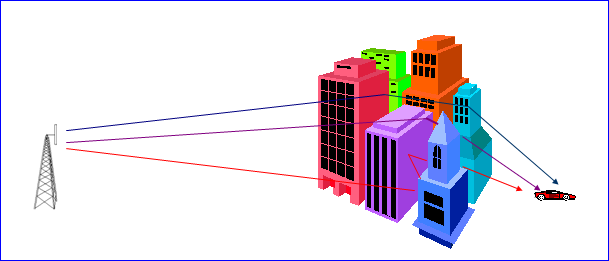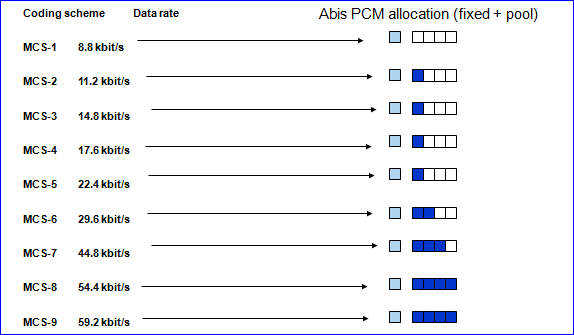FADING in Telecomunication
•
The
communication between the base station and mobile station in mobile systems is
mostly non-LOS.
•
The LOS path
between the transmitter and the receiver is affected by terrain and obstructed
by buildings and other objects.
•
The mobile
station is also moving in different directions at different speeds.
•
The RF
signal from the transmitter is scattered by reflection and diffraction and
reaches the receiver through many non-LOS paths.
This non-LOS path causes
long-term and short term fluctuations in the form of log-normal fading and
rayleigh and rician fading, which degrades the performance of the RF channel
LONG TERM FADING
•
Terrain configuration & man made
environment causes long-term fading.
•
Due to various shadowing and terrain
effects the signal level measured on a circle around base station shows some random
fluctuations around the mean value of received signal strength.
•
The long-term fades in signal
strength, r, caused by the terrain configuration and man made environments form
a log-normal distribution, i.e
the mean received signal strength, r, varies log-normally in dB if the signal
strength is measured over a distance of at least 40l.
•
Experimentally it has been determined
that the standard deviation, s,
of the mean received signal strength, r, lies between 8 to 12 dB with the higher s generally found in large urban areas.
RAYLEIGH FADING
•
This phenomenon is due to multipath
propagation of the signal.
•
The Rayleigh fading is applicable to
obstructed propagation paths.
•
All the signals are NLOS signals and
there is no dominant direct path.
•
Signals from all paths have comparable
signal strengths.
•
The instantaneous received power seen
by a moving antenna becomes a
random variable depending on the location of the antenna.
RICEAN FADING
•
This phenomenon is due to multipath
propagation of the signal.
•
In this case there is a partially
scattered field.
•
One dominant signal.
•
Others are weaker.
DOPPLERS SHIFT
•
Dopplers shift is the shift in
frequency due to the motion of mobile from the actual carrier frequency.
•
Consider a mobile moving at a constant
velocity v along a path segment having a length d between points X and Y while
it receives signal from a remote source S.
•
The Change in frequency due to dopplers shift is given by
fd
= (v/l) * cos(f)
•
It can be seen from the above equation
that if the mobile is moving towards the direction of arrival of wave the
dopplers shift is positive I.e. the apparent received frequency is increased. .





